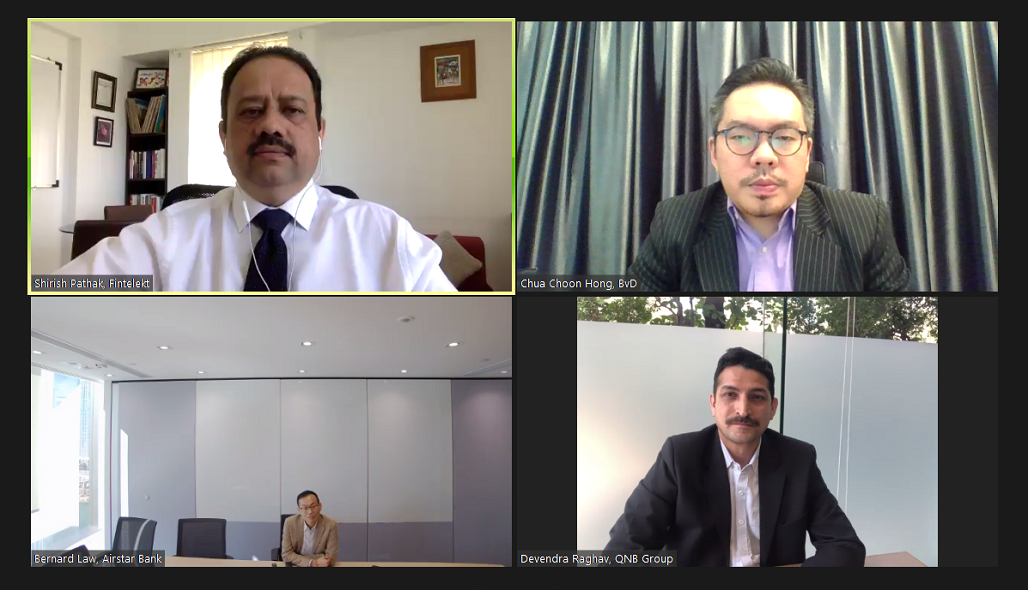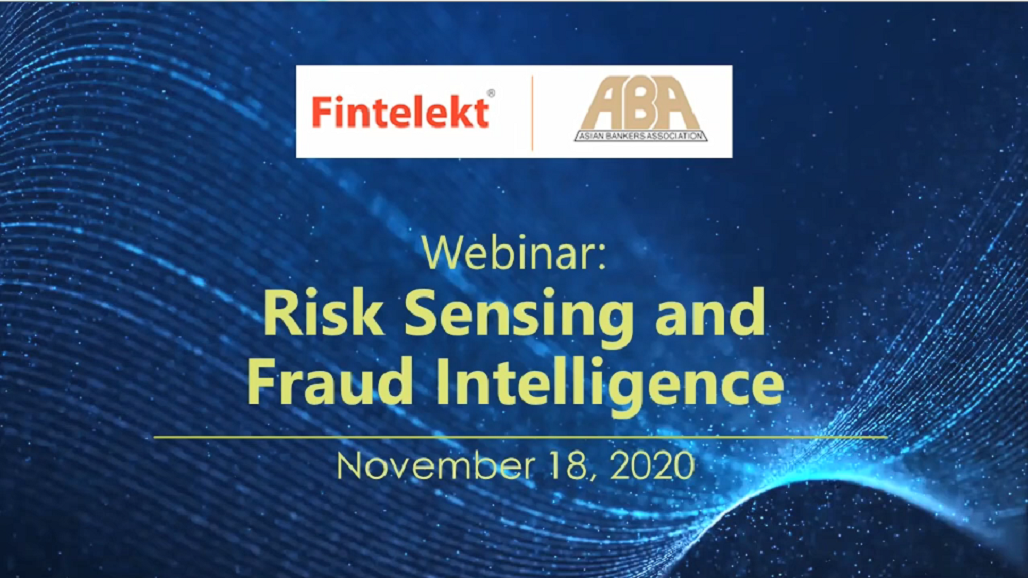The webinar on Risk Sensing and Fraud Intelligence in the 2020 Webinar series on 18 November 2020 was another successful event jointly organized by the Asian Bankers Association and Fintelekt Advisory Services, Ltd.
With more than 693 registered participants from 45 countries, this webinar was another effective ABA-Fintelekt training session.
The webinar was moderated by Shirish Pathak, Managing Director, Fintelekt Advisory Services. The panelists were:
(*) Bernard Law, Head of FCC and MLRO, Airstar Bank
(*) Chua Choon Hong, Head of Compliance Solutions – APAC, Bureau van Dijk, A Moody’s Analytics Company
(*) Devendra Raghav, Head of Compliance and Internal Control, QNB (Qatar National Bank) Group
We would now like to share with all registered participants the following resources presented during the session:
(1) The video recording of the webinar is available in the ABA Youtube channel.
(2) The Presentation PDF can be downloaded HERE.
(3) The webinar’s assessment test is accessible HERE. The deadline for completing the assessment test is 2 December 2020.
(4) The Summary Report of the webinar can be read below.

SUMMARY REPORT
Bernard Law started by pointing out that regulators regard risk sensing as an important process before the risk-based approach can be applied.
He recommended a two-tiered approach to risk assessments which include understanding the macro-level risks through the National Risk Assessment and sectoral risk assessments published by the country regulator.
Secondly, organisations should conduct a regular institutional risk assessment to identify the major threats and vulnerabilities. Organisations can then put in place an integrated approach towards combating money laundering, terrorism financing and sanctions risks presented to the financial institution and deploy the maximum resources for the highest risk areas accordingly.
Digital banking imposes certain specific AML risks which are different from those involved in traditional banking. The onboarding of non face-to-face customers depends heavily upon technology and involves conducting a video verification of identity documents of the customer as well as ascertaining the identity of the customer through selfies.
The e-KYC tools deployed for this purpose should be robust and tested thoroughly for the highest reliability. It can be tuned to use the inbuilt security features of national identity documents. One way to test the system would be to collaborate with the local police or law enforcement agencies to acquire forged ID cards and ensuring that the system flags off the forged cards as such.
He also alerted participants about the risks in digital banking from criminal syndicates opening accounts through stooges or mules.
Chua Choon Hong’s presentation focused on the horizon of risk scanning and the importance of early warning systems to counter the constantly evolving fraud and AML typologies.
The key takeaways from Choon’s presentation were:
- Timeliness of early warning signals of risk can help organisations put in place mitigating measures before incidences snowball and create a major impact
- Cover intelligence from as widely as possible as perpetrators are spread across geographies
- Go deep into the risk typology to learn from the modus operandi and use the insights to look at what other exposure that your organisation is faced with
- Overlay a multitude of data sources such as newsfeeds, social media sources and blacklists to create risk models towards gathering deeper insights
- Operationalize the intelligence gathered by the organisation via using dashboarding, so that any reporting will have audit trails for the management.
Devendra discussed the high cost of frauds and the significant increase in the volume and gravity of instances of fraud across various sectors particularly in the banking sector.
He advises the use of risk mitigation strategies i.e. to trace and detect signals of fraud before any incident takes place. Risk sensing should be integrated into the risk management and governance programme. The overarching goal of a fraud response program is to protect the organisation from the economic, reputational and legal risks associated with the fraud allegation.
Taking the example of trade finance fraud, he explained that due to more extensive and effective anti-money laundering controls that financial institutions are applying, manipulation of trade finance is becoming more and more appealing to financial criminal and is becoming more profitable. To counter this risk, employees at all levels must be made aware of antifraud activities, have a clear understanding of what is expected of them, know that the organisation takes the threat of fraud seriously, and know where to seek assistance and advice.
As best practices for implementing big data for fraud prevention in the financial sector, Devendra recommends starting with small and specific uses for big data, working with high quality data, assessing and planning for the relevant regulatory environment and incorporating the right mix of strategies, policies and skills.


Leave a Reply